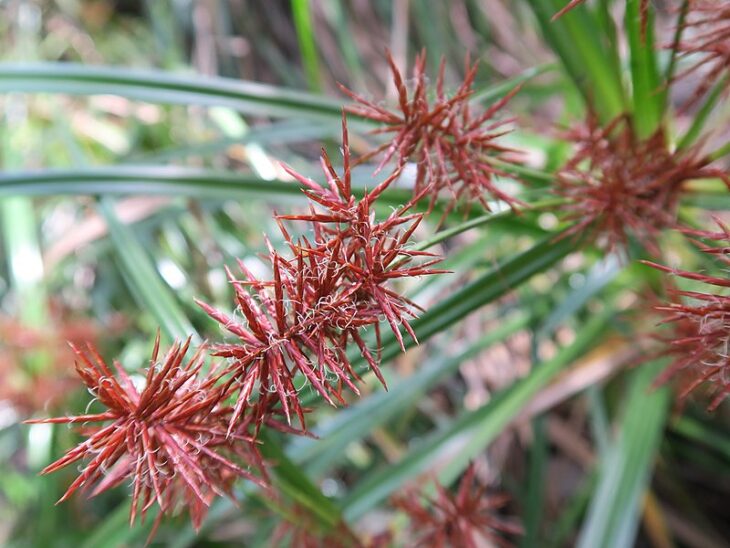The human stomach has a protective layer shielding it from acids produced during digestion. When infections or some lifestyle habits, like excessive alcohol consumption, damage this protective layer, the acids irritate the stomach and cause a wound called a gastric ulcer. Gastric ulcer often happens when a common stomach bacteria, Helicobacter pylori (H. pylori), infects a person and releases its toxins.
According to the Centre for Disease Control and Prevention, H. pylori affects two-thirds of the world’s population and continuously develops resistance to existing drugs like antacids and antibiotics. These drugs also have side effects like diarrhea, dizziness, rashes, and constipation. As an alternative, scientists are interested in creating drugs from natural products, like plants, because they might be stronger against bacteria and have fewer or no side effects.
Nutgrass is a native medicinal plant in Africa and Southern Asia. It is also a common lawn nuisance in other nations like the US and Australia. In the past, researchers have found beneficial biochemical compounds in nutgrass, like flavonoids and antioxidants, that can kill microorganisms and prevent infection. Traditional healers have also used nutgrass to treat stomach infections, but there is no scientific record of how they used it to fight these infections or if it had any negative effects.
Traditional drug development takes researchers 12-15 years and costs billions of dollars. It involves five major steps, from finding the right drug compound to clinical tests, Food and Drug Administration review, and market safety monitoring. Researchers can spend years on each step before the next due to poor performance of the potential drug and safety issues. Scientists have more recently started using computers to design drugs, which can reduce the cost and the time it takes.
I decided to explore whether nutgrass extract could prevent or treat gastric ulcer using computational methods. I worked with collaborators from Nigeria, Saudi Arabia, Brazil, and Peru. We aimed to identify safe nutgrass compounds capable of preventing the spread of H. pylori and the effects of a toxin it produces. A drug compound with a low binding energy can quickly find and bind to its target in the body and neutralize it. So we hypothesized the compounds that require the least energy to bind most strongly to the H. pylori toxin would be the best at blocking it.
We started with 26 nutgrass compounds and used 2 common gastric ulcer drugs as controls for comparison. We used the 3D molecular structure of the H. pylori toxin and the chemical bonding structures of the nutgrass compounds from online databases. We used a desktop application, Chimera, to clean the toxin structure, by removing atoms like oxygen and nitrogen that are only useful to preserve the structure in the online database. We used a suite of other drug design tools, PyRx, to chemically bind the toxin with each nutgrass compound. We observed the type and strength of interactions between each compound-toxin pair from the statistical data and images this tool generated.
We predicted how the nutgrass compounds would interact with the toxin by seeing how many chemical bonds, like hydrogen-hydrogen bonds, formed between them. We also observed the types of interactions between the compounds, like the hydrophobic interactions that occur when some molecules fear water and group together to avoid it. Finally, we compared the binding energies between each nutgrass compound and the toxin to the binding energies between the control drugs and the toxin. Seventeen of the compounds we tested had stronger bonds and lower binding energies than the control drugs, suggesting they would better neutralize the ulcer toxin.
Next, we used web servers, like SwissADME and ADMETsar, to assess the safety of the nutgrass compounds. These servers provide statistical data on how well each compound would dissolve in the stomach, move through the mouth to the target location, or penetrate the brain. They also identify potential side effects of the compounds, like cancer, eye or skin irritation, liver damage, or hormonal imbalances. We picked compounds that wouldn’t harm human organs and would be suitable as an oral drug.
Finally, we used custom Python scripts to simulate a human body that experiences changing conditions due to stress, water, or acidity levels. We observed how the compounds performed in the simulated body and identified the ones stable enough to remain bound to the toxin despite these changing conditions. Of the 17 compounds we tested, 7 were safe for human organs, and 2 were the most stable.
We concluded these 2 most safe and stable nutgrass compounds could be developed as natural inhibitors of the H. pylori toxin to treat and possibly even prevent gastric ulcer. We suggested these compounds be used as a starting point to develop novel drugs for patients with this disease. We recommended further laboratory analyses of the effectiveness of these compounds to test our computational predictions.


